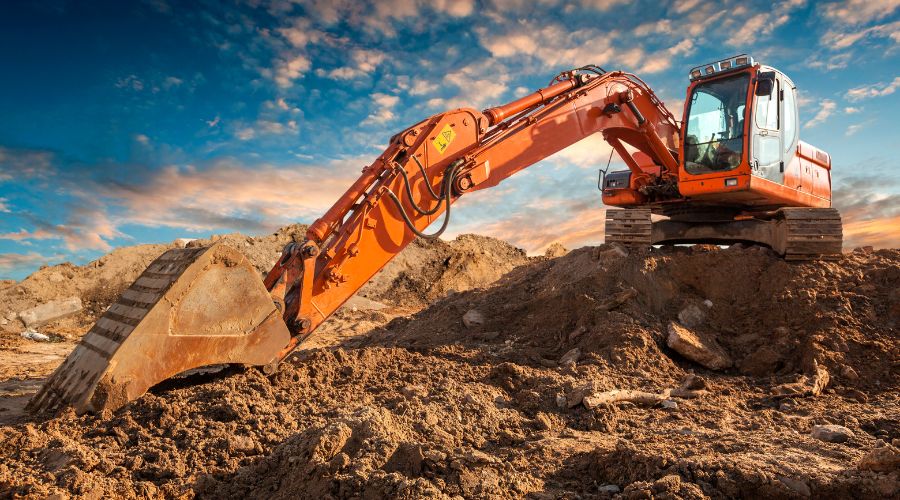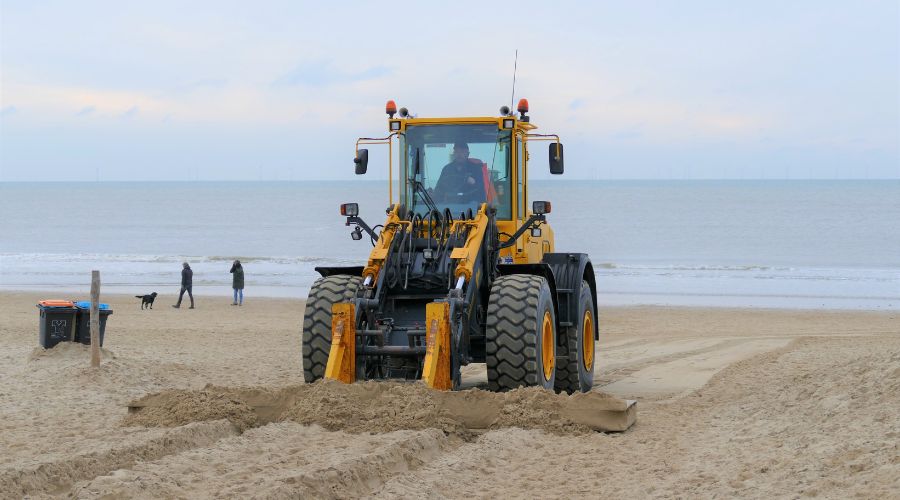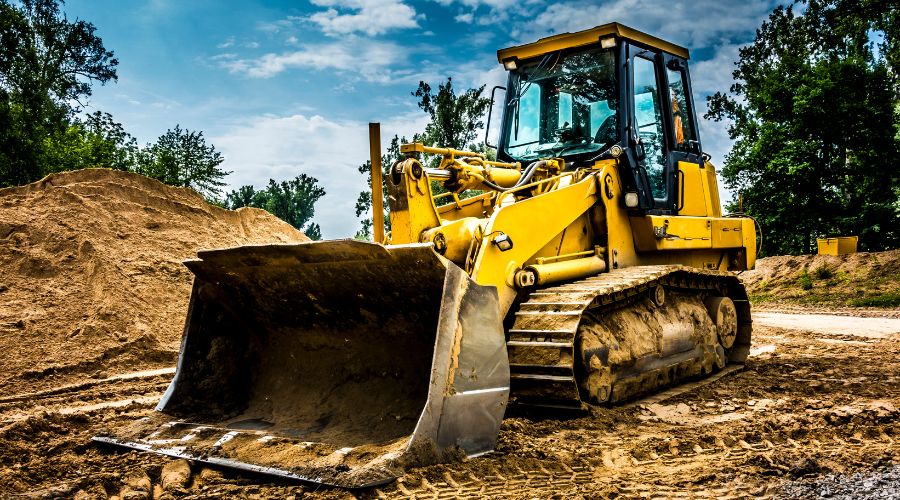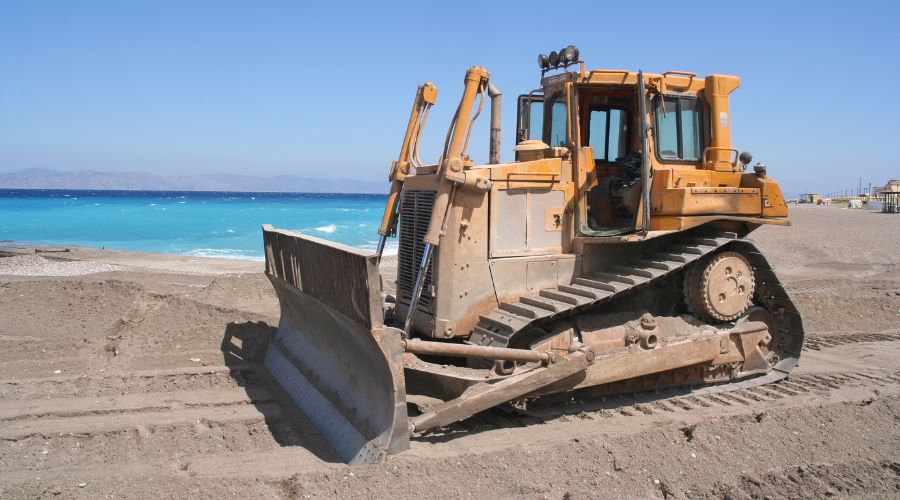You might have seen a dozer on a construction site. Ever wondered what this big toy is doing there? It looks too heavy, but do you know its actual weight? People love seeing a bulldozer in action and are curious about how it is operated, steered and used for construction.
But the most common question that crops up in the minds of individuals is how much a bulldozer weighs. 8 tons? 100 tons? Or 150 tons?
Well, the average weight of a bulldozer depends on its size. Various sizes of bulldozers exist in the market, and they range anywhere between 8 and 180 tons. The right bulldozer type for you will be determined by the purpose you buy it for, whether you work on small or large-scale projects.
In addition, buyers also need to consider how the bulldozer’s weight will impact their ongoing projects, teams, and businesses. So, let’s delve deep into this exclusive blog on how much a bulldozer weighs in order to determine which dozer would perfectly suit your needs. Read on!
1. What is a Bulldozer, and Where is it Used?

A bulldozer or dozer (aka crawler) is a significantly large, motorised machine with a metal blade attached to the front. It is used for pushing materials such as snow, rubble, rock and soil during construction projects. This heavy machinery most commonly runs on continuous tracks; however, you can also see dozers or crawlers with off-road tires and they are specially produced models.
In general, dozers are employed in small and large-scale construction work, mining, road building and quarrying. You can also see dozers in heavy industry factories as well as in military operations where manpower is not enough to move the objects there. Though a bulldozer can do nothing else can do, sometimes it is mistaken for other heavy-duty equipment, such as a backhoe or front-end loader.
2. Various Sizes of Bulldozers

The bulldozers are divided into three categories, namely small bulldozers, medium bulldozers and large bulldozers. Each size is made for different works and projects; here is in-depth information regarding each, which will help you choose the best for your next project:
- Small Bulldozers: This size is ideal for light construction work as they are lightweight and compact. They can work on fragile terrain as they travel on continuous tracks and weigh around 20,000 pounds. Also, small bulldozers can fit into small spaces but carry out fewer tasks.
- Medium Bulldozers: Another size of bulldozer is medium and is perfect for construction sites or projects where there are restrictions on the weight or size of the machinery. You get more HP (horsepower) in medium bulldozers compared to small ones and they typically weigh around 20,000 to 60,000 pounds.
- Large Bulldozers: Large bulldozers offer maximum power and efficiency, making them perfect for more complex tasks and large-scale projects. These bulldozers can run on the roughest trains and weigh around 60,000 to 150,000 pounds. You will find large bulldozers operating in harder areas, mostly quarrying or landfilling.
3. Most Popular Bulldozer Models and Weight

You might have seen a lot of bulldozers on construction sites, but you must not be aware of what model they are or which company produces them. Here’s the list of the most popular bulldozer models that can be easily spotted on construction sites with their weight:
- Caterpillar D6: It is a medium-sized bulldozer that is used in construction work and mining. Caterpillar D6 weighs around 18 to 23 tons, however, the weight can also be affected by the configuration you choose for the bulldozer.
- John Deere 850K: This model of John Deere is quite powerful and efficient. It can tackle complex tasks easily. John Deere 850K weighs around 19 to 21 tons and has become a popular choice among buyers over time.
- Komatsu D85: With an operating weight of 27 to 29 tons, Komatsu D85 is a well-known and versatile bulldozer. It is used for a wide variety of applications, including agriculture, earthmoving, forestry, etc.
4. How Much Does a Bulldozer Weigh?

After getting familiar with the functioning, various sizes, and uses of bulldozers, you might be excited to discuss the most burning question, which is about the weight of a bulldozer. As mentioned above, the weight of a bulldozer greatly varies depending on its size as well as type. A bulldozer’s weight generally ranges from 8 to 108 tons or 7257 to 163293 kg, respectively.
Caterpillar D9 is one of the most commonly used bulldozers and it weighs around 49 tons or 44452 kg, which equates to 6 African elephants weight. If you need more in-depth information regarding the weight of different bulldozers, have a look at this table that comprises the names of various bulldozers and their weight:
| CAT Bulldozers | Operating Weight (pounds) | Other Bulldozers | Operating Weight (pounds) |
|---|---|---|---|
| CAT D9 | 110,225 | John Deere 1050K | 96,100 |
| CAT D8 | 88,698 | Komatsu D475 | 254,195 |
| CAT D6 | 52,715 | CASE 1650M | 39,557 |
| CAT D4 | 30,882 | CASE 2050M | 84,733 |
| CAT D10 | 154,700 | Liebherr 746 | 69,446 |
| CAT D5 | 42,263 | Liebherr 756 | 94,799 |
| CAT D3 | 21,810 | Liebherr 766 | 119,784 |
| CAT D11 | 229,800 | Liebherr 776 | 161,354 |
